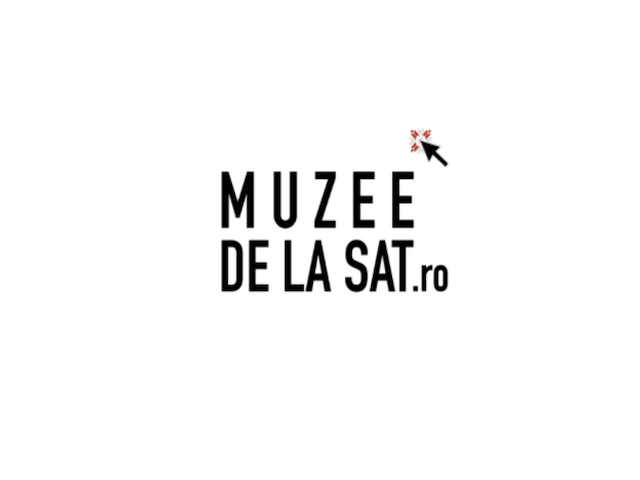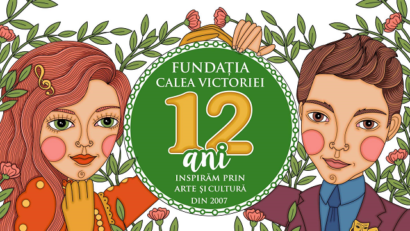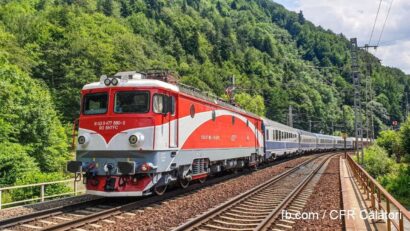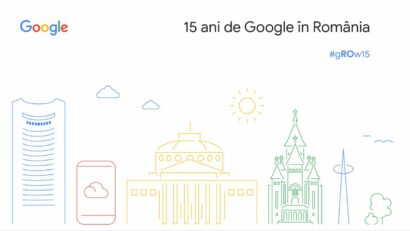Rural museums in virtual format
Muzeedelasat.ro is a free online platform dedicated to rural museums from around Romania, including little-known gems.

Ana-Maria Cononovici, 30.11.2021, 14:00
Muzeedelasat.ro is a free online
platform available in Romanian and English and which can be accessed from 1st
December. The team of the project has four members: Cosmin Murărașu, project manager
and 3D scanning technician, Ionuț Teoderașcu, visual editor and photographer, Nicoleta
Felea, copywriter, PR and writer, and Silvia-Alexandra Nistor, translator. Ionuţ
Toderaşcu tells us more about this platform:
Muzeedelasat
is a new platform launching on 1st December dedicated to museums in
the rural area. We’ll begin with the eight counties in the Moldavia region and
we’re planning to cover the whole country and provide a map of all museums in
the rural area. The platform contains virtual trips and documentary material we
gathered on site. The project began in fact in September this year, when we
went to each museum to scan the interior of the building. The virtual tour is
like a video game, you can explore every room, zoom in on a certain exhibit, examine
it in detail, which in fact makes you want to visit it in person and walk the
streets of the village. We are passionate about Romania’s rural areas and we
believe they deserve to be known better.
Each museum was scanned, photographed
and documented before a virtual 3D tour is created using high-tech equipment
integrated into Google Street View, Google Maps and Google Earth, containing a
series of photographs, short descriptions and short presentation videos. Ionut Toderaşcu
says the first stage of the project is dedicated to the museums in the Moldavia
region, in eastern Romania:
28 museums are included in this
first stage, from each village in Moldavia. To give you a few examples, one
such place is the Vatra cu Dor traditional household in Galaţi county, a place which is also perfect for young people. It’s not
just a museum, but a place where an interactive relationship is being built
between the hosts and the young people who come there and want to know what
village life was like in the past. In Vrancea, we have included museums like the
Ion Roata memorial house, where we meet Sevastiţia, an old lady who takes care
of the house, including repainting it from time to time. Everywhere we went we
discovered people who love what they do and as a visitor, it’s special kind of
feeling, one you don’t normally get when you go to a museum in a city. You end
up talking to the people, they tell you about their life, and the history of
the museum. Our list also includes bigger museums, such as the Alexandru Ioan
Cuza museum in Ruginoasa in Iaşi county, which is a very imposing building,
almost like a castle. In Neamţ county, for example, we included Popa House,
where visitors can explore village life as it once was and see the traditional
masks and art objects created by Mr Popa.
We asked Ionuţ Toderaşcu to name one
particular museum that he liked:
I probably enjoyed best our visit
to the George Enescu memorial house in Botoşani,
but that’s also because the weather was beautiful when we went there. The museum
is a bit out of the way, in the middle of nature, and there was such a special vibe
around that place. The Alice and Dumitru Rosetti Tescanu museum in Bacău is very
involved in the cultural life and hosts various events every year, being very
welcoming hosts.
As for
the exhibits that most intrigued him, Ionuţ Toderaşcu said:
I think it was also in Tescani, the objects that belonged to George
Enescu. Knowing who Enescu was and being in those rooms, seeing the violin he played
on, it’s a special feeling. By what we do, by these virtual tours, we want in
fact to make people want to explore those places in person.
The four members of the team involved
in the project to promote Romania’s rural museums enjoyed every minute of their
travels around the country to document these places, as Ionuţ Toderaşcu
remembers:
It was like a marathon going to all
these museums. We explored all 28 of them in 20 days, scanning and taking
photographs for the virtual tours, travelling over 5,500 km. There was a lot of
work involved, and after gathering the information we spent another few weeks
processing it. We wanted to launch on 1st December because of the significance
of this holiday for Romania [as national day] and also because it gave us time
to be ready with the whole content.
Besides memorial houses that
belonged to well-known figures from Romania, the platform also invites us to
get to know places like the Miron Costin Dowry Chest Ethnographic Collection in
Neamț county, the El Greco Ethnographic Museum in Suceava county, the Bucovina Salt
Museum in Bacău county, and many, many others. (CM)






























